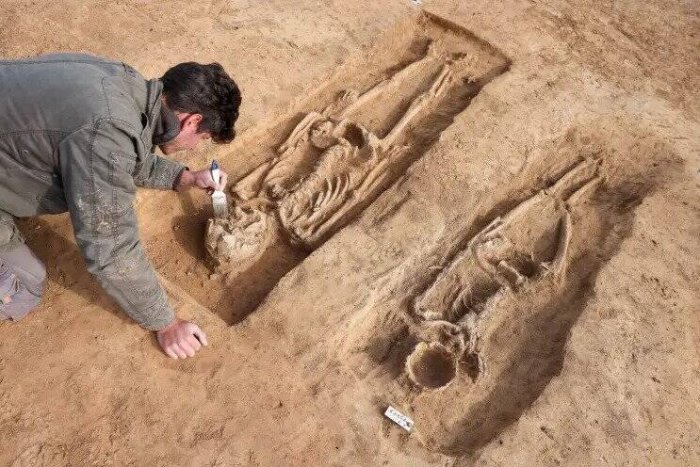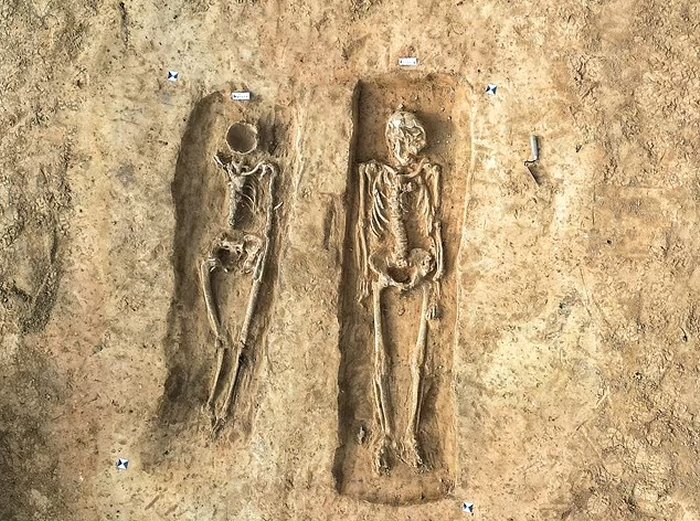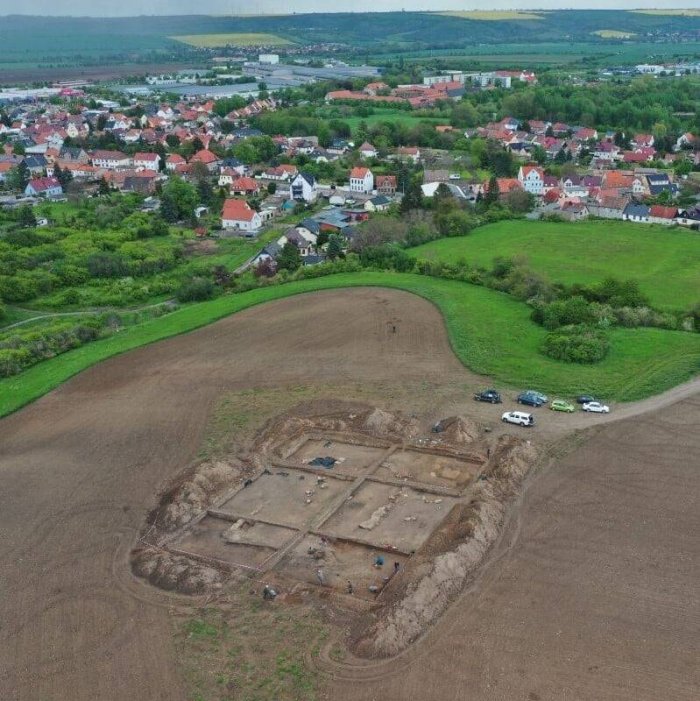Jan Bartek – AncientPages.com – Archaeologists have unearthed a strange 1,000-year-old grave containing the remains of a woman and man. The most curious aspect of this discovery is that the woman’s face is missing. It is almost as if it was hollowed out, scientists said.
The puzzling find was made at the site of a former Medieval imperial palace in the eastern town of Helfta, near Eisleben, Germany.

Archaeologists have uncovered the remains of outer castle fortifications, pit houses, and a later castle in Germany at the site of a former medieval imperial palace in the eastern town of Helfta, near Eisleben. Credit: Jan Woitas/dpa
Everything indicates that the man and woman buried in the grave were extremely wealthy. They were most likely a married couple, but whether they died together or separately is currently unknown.
Inside the grave, archaeologists found several items, but strangely, the woman was unusually buried with no possessions. It may of course have been her wish to be put to rest with no belongings, but it was uncommon in those days, according to the German News Agency DPA.
“The fact that there was nothing with her is very unusual. Maybe she was already Christian, but the man was even more traditional. In Christianity, these kinds of additions were avoided,” archaeologist Felix Biermann from the Saxony-Anhalt State Office for Monument Preservation and Archeology said.
“With the man lay several iron grave goods, including a knife, a belt set and the fitting of what is known as a staff of office. So the man might have been a socially higher-ranking person,” Biermann added.
When examining the female skeleton, scientists noted the woman was about five feet tall. The wealthy woman was found lying on her back next to her husband’s skeleton, but to scientists’ surprise, the top of her head was missing. Archaeologists have no clue why her facial bones are missing.

The pair are believed to have been wealthy individuals when they were alive. Credit: Jan Woitas/dpa
The remains of her and her husband will be transported to a lab for further investigation. Experts will try and determine how the couple died and what exactly happened to the woman’s facial bones.
During the excavations, archaeologists also studied the ancient ruins, which suggest this place and its nearby surroundings were once home to about 1,000 people.

The excavations of the ancient palace near Eisleben have provided scientists with valuable historcial information. Credit: Landesamt für Denkmalpflege und Archäologie Sachsen-Anhalt/Facebook
The archaeological discoveries offer valuable insights into what life was like there between 750 and 1024 C.E. when the Carolingian and Ottonian dynasties ruled.
See also: More Archaeology News
“In the two outer castles of the fortified imperial palace, there was evidence of dense settlement with numerous pit houses,” Bierman explained.
“This is an important insight into the infrastructure of the imperial palace and the areas where ordinary people lived, worked and created the economic foundations for the Carolingian-Ottonian center of power.”
Written by Jan Bartek – AncientPages.com Staff Writer





